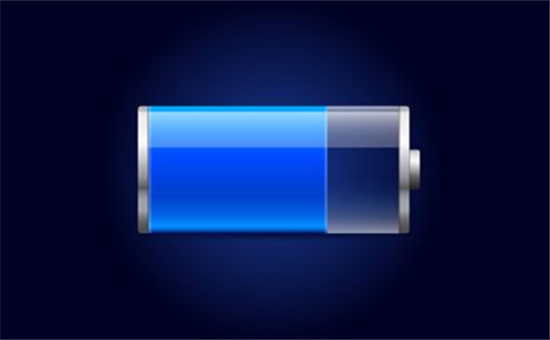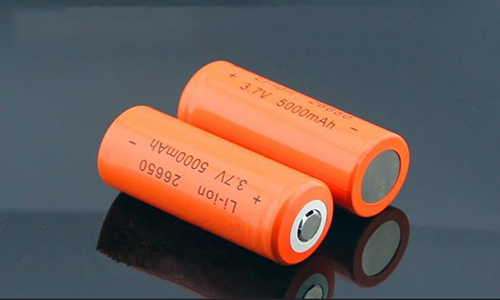Where do we get lithium for batteries?
Aug 22, 2019 Pageview:2032
Fossil fuels (the most common being gasoline and diesel) are currently at a state where their reserves are being depleted and are constantly causing us challenges due to the exhaust emissions. As we all, including governments and industries, demand a new form of energy source to power our homes and devices, due to an increase in population and economy, new sources of energy such as batteries come into play. The latest battery technology is the wonderful lithium-ion and can be used in either electric or hybrid cars amongst others. Lithium-ion batteries are far lighter than the previous battery technologies we have been used to, and they have a much longer charge power too.
At present, the demand for lithium-ion batteries to be used in portable electronics, electronic tools, and electric or hybrid vehicles is on the increase. To this effect, the demand for lithium for batteries is expected to increase significantly, prompting a double in the total lithium demand by 2025.
Where does lithium come from for batteries?
So in the light of these, where does the lithium used for these batteries come from? Well, simply put, it comes from the Earth. However, it does not require strip mining or the blowing up of mountain tops like the other resources demand. According to Reuters, the bulk of the lithium used by humans are gotten from ?South America, particularly in the Andes, which crosses Chile, Argentina and the newcomer to the lithium market, Bolivia. Deposits of lithium are also found in China as well as the United States, some of which are traditionally extracted from rocks.
However, lithium is often present in underground briny ponds. The liquids are often pumped and left to be sun-dried. The resulting material is converted to lithium carbonate and converted to lithium only. Then the lithium is sent via air, train, truck or boat to a battery factory.
Every good thing usually comes to an end, but this is not the case with lithium-ion batteries. They do have a life after death. If they are no longer usable, it is possible to disassemble the batteries and have their bits remade to something else. For example, Tesla recycles the cooling fluids, electronics, and wires in lithium batteries. The rest is crushed into pieces, melted and separated into their component metals and are recycled.
The recycling facilities of Lithium-ion batteries are still coming up, but it may take some time for them to spread out. The batteries and the electric vehicles which use them are just being introduced into the market. Any company which goes into recycling now will be at the fore of handling the numerous batteries which are damaging every day and are in need to be recycled.
What devices use lithium batteries?
Lithium batteries are mainly used as a power source for various portable electronic devices and several numerous medical implanted devices. Although they maybe a little bit more expensive than the conventional alkaline batteries, lithium batteries are long term investments since they have a much longer life and do not need to be replaced as often as the alkaline batteries. There are many devices which use Lithium batteries, and it will be difficult listing them all –but here are a few.
· Pacemakers
Pacemakers and many other implantable medical devices make use of lithium batteries, specially designed for them, and they can last at least 15 years before needing to be replaced.
Digital cameras
Many digital cameras make use of lithium batteries, which greatly increases the number of pictures that can be taken between different battery changes or charge. However, the manufacturer's recommendations for using these lithium batteries for cameras must be followed to the latter, because overloading may damage the device.
· Smartphones and Personal digital assistants (PDAs)
With small lithium batteries, many standalone PDAs, as well as smartphones are powered. Also powered by lithium batteries are PDA and music players.
· Watches
Because long life is an attractive feature of watches, most watch manufacturers produce wristwatches powered by 3-volt lithium batteries.
· Solar energy storage
The use of solar energy in the United States has increased by about 30% between 2013 and 2014. Even though you are in the desert, there are some days when the sun just wouldn’t shine or days when your solar panels may need repairs. With Lithium batteries, you do not have to remain in the dark, you’d still enjoy power stored in lithium batteries from your solar panel.
The way rechargeable lithium batteries charge is best used with solar storage devices because of how they charge, and how they discharge. Solar panels have low resistant charging and this is what is required of Lithium batteries. These batteries charge quickly, which allows them to maximize the storage power of solar panels from the daylight.
· Miscellaneous Devices
There are miscellaneous devices powered by lithium batteries, and these include thermometers, MP3 players, hearing aids, children toys, calculators, battery backups in computers, etc.
How to protect lithium-ion batteries
Lithium batteries are in high demand due to their power, energy density, design flexibility, and small form factors. While some cylindrical lithium-ion cells contain PTC as basic surge protection, popular lithium polymer cells do not. So for these, there is a need for additional considerations which are necessary to avoid battery failure and hazard. It is important to protect the lithium in your batteries and one of the ways you can do so is to avoid overcharging.
You must ensure you get a lithium-ion battery fire bag, ensure your battery is not over-discharging and the voltage flowing into your battery is recommended. You must also avoid short circuit conditions as well.
To get the best out of your batteries you should endeavor to use the battery in ideal conditions and not overload it, so discharge level will not be higher than normal. Use the recommended charger for it also. Usually, the algorithm of the charger most lithium battery uses is the constant current/constant voltage algorithm. You must adhere to the instruction from your technician to ensure strict compliance.
So there you go, now you know more about your lithium-ion batteries; where they are gotten from, how to protect and of course, devices that make use of lithium-ion batteries. We hope this information is of importance to you.
Leave Message
Hottest Categories
-
Hottest Industry News
-
Latest Industry News











